Accidents occasionally do happen and you might find yourself or a loved one sustaining a cut and wondering what to do about it. Sometimes it can be difficult to judge whether it is a relatively superficial cut and can be left alone, or whether it is something more serious – whether it warrants a GP visit or even a trip down to the Accident and Emergency Department. Let us discuss some of these scenarios to decide what is the next best step to take when in such a situation.
Can a cut heal without getting stitches?
It all depends on whether the cut is deep or not. If the cut is a superficial cut then it’s likely to heal on its own with a simple dressing and it will heal quite nicely. However if the cut is deeper, you will likely need stitches. I guess the challenge is to assess whether the cut is superficial or deep. Most people will probably visit the emergency department or the accident and emergency if the bleeding is more profuse than usual.
How do I know if I need no stitches?
For most people if the bleeding has stopped already, and if the cut or wound is not deep then most people will assume stitches are not required. Actually it would help if you could see if the cut has penetrated the first layer of skin and if the cut has gone down to the deeper layers, then proper wound closure is likely needed.
Usually this assessment is best done by a doctor or a trained professional. I have seen cases in my clinic where patients do not realize that they need surgical repair of the wound. In some of these cases the wound is actually fairly deep and has already involved the deeper structures underneath the skin and therefore will need surgical repair.
I have also seen other cases where patients assume that they need stitches and they show up in the accident and emergency department but they actually do not need surgical closure. So I will advise that the patients seek medical attention in the nearest GP or Clinic to get it assessed first before heading straight to the A&E assuming that stitches are needed.
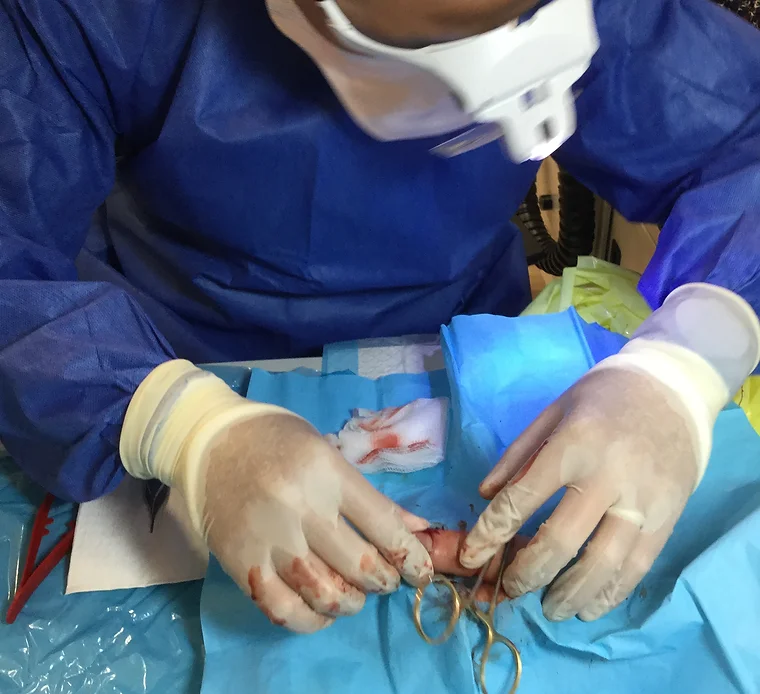
Do I need stitches if it stops bleeding?
Once you have accidentally cut yourself or sustained a laceration the first thing you should do is apply pressure on the wound itself. Probably it will be a good idea to get a clean piece of gauze or tissue to apply onto the wound directly. If such materials are not available then the next best thing will be any available clean piece of cloth.
The main thing is actually to apply pressure directly onto the wound to minimize the blood loss. Assuming that you are not taking any blood thinners, for a superficial one most bleeding should stop within 10 to 15 minutes. However for more deeper cuts the bleeding may last a little bit longer. This is when most patients will probably check in with the nearest doctor or clinic whether the stitches are required.
I would recommend that if the wound looks deep and even if the bleeding has stopped it will be a good idea for you to check in with the nearest doctor for further assessment because there are other things to assess also for example the possibility of wound infection and the need for tetanus vaccination if required.
Do cuts heal faster, covered or uncovered?
In my experience most cuts should be assessed by a healthcare professional. I have seen cases where patients have left a cut unattended to and the cut has resulted in the wound being infected. In the clinic a proper assessment of the laceration or cut or wound needs to be done first before any treatment is done.
We also would like to check if the patient has any pre-existing medical conditions like diabetes or any other conditions that can affect wound healing. So as you can see it is not just about cleaning the wound and sending the patient back home. There are actually a lot of other assessments that need to be done before deciding on what is the best cause of treatment for the patient.
Assuming that it is a relatively simple case and the wound can just be dressed and the patient can be sent home, generally it is a better idea for cuts to be covered with a proper dressing. Once the wound has healed enough and there is an adequate scab formation above the wound itself then the wound can be left uncovered at this point in time.
Do wounds heal faster overnight?
Over certain places like wounds on the elbow and knee, if there is less movement at night then wound healing should be a little bit faster.
What happens if I don’t get stitches?
For deep wounds or cuts, if your doctor has recommended surgical repair then you should strongly consider this option. If by some chance you do not want surgery or surgical repair of the wound, and only if the bleeding has stopped on its own then it is an option for you to allow the wound to heal on its own.
However you should know that there is a chance for complications to occur. Such complications can include increased risk of scarring, poor wound healing and increased risk of infections.
Are stitches absolutely necessary?
This depends on the wound itself. If your doctor has assessed that stitches are needed it is likely that your doctor has balanced the outcome of a surgical repair versus the outcome of non-surgical healing. The main thing is to get the wound closed properly. If the wound is not closed properly then there is a high risk of wound infection and subsequent complications.
What are the 4 types of wounds?
Abrasion
An abrasion happens when your skin scrapes against a rough or hard surface like road or pavement. Bleeding is usually not significant, but there is a higher risk of bacterial contamination, hence the wound needs to be professionally cleaned and treated to avoid infection.
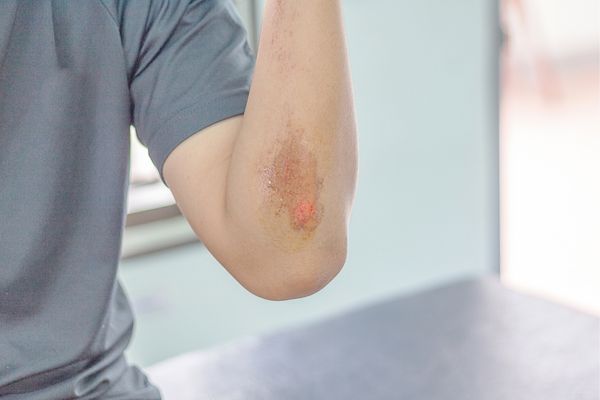
Laceration
A laceration is a deep cut of your skin. Accidents with sharp objects like knives, tools, and machinery are frequent causes of lacerations. In the case of deep lacerations, bleeding can be rapid and extensive. Usually lacerations require surgical closure of the wound.
Puncture
A puncture is a small hole caused by a long, pointy object, such as a nail or needle, or even animal tooth bites.
Punctures may not bleed much, but these wounds can be deep enough to damage internal organs. If you have even a small puncture wound, visit your doctor and have the wound checked to prevent infection. Dog or cat bites causing puncture wounds are most difficult to treat due to the very high risk of infection. I have managed several dog and cat bites in the clinic, which took several weeks to heal properly.
Avulsion
An avulsion is a partial or complete tear of skin and the tissue beneath. Avulsions usually occur during violent accidents, seen in severe road traffic accidents, explosions, and gunshots. They bleed heavily and rapidly. Usually, such cases are best managed in the Accident and Emergency Department.
What size of cut requires stitches?
This depends on the location of the cut itself. If the cut is located on the upper and lower limbs and not over any joints, then probably deep wounds more than one centimeter would require a surgical repair of the wound itself.
If the cut is located on the face then I would assume one would not like scarring, hence any deep wounds would require surgical repair irregardless of the length of the wound. Do know that lacerations or cuts over the head and scalp generally will cause a bit more bleeding and hence these wounds are a little bit more dramatic than usual. So it will be a good idea to get these wounds surgically repaired as soon as possible.
How many stitches does a 1 inch cut need?
For a 1 inch cut I estimate that 2 to 3 stitches may be required to close the wound properly. But this all depends on the location of the cut itself. Some cuts over the joints may require more features to close properly and hence it may be difficult to assess how many stitches are needed. It all depends on the location of the cut.
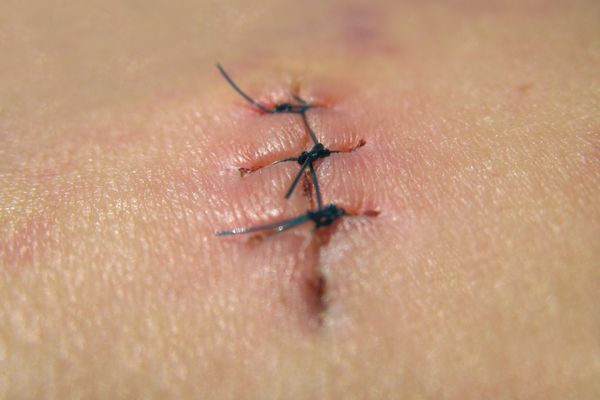
What to expect during wound stitching in a GP clinic?
In a GP clinic, if the wound is deep enough, or wide enough to require stitches, this is what I would usually do to surgically repair and close the wound:
- Clean the wound with sterilizing solutions like chlorhexidine and or alcohol.
- Anesthetize or numb the area with injections. I would usually use a cold spray to numb the skin beforehand and then use the smallest possible needle to inject the local anesthetic to numb the wound. Once the surgical area is numb, you would not be able to feel any pain or discomfort during the procedure.
- Next, I would check the wound for any other objects or debris inside the wound. Even if there is nothing in the wound, I would still clean the wound thoroughly with chlorhexidine to disinfect the wound properly
- Now, it would be time to close up the wound with appropriate stitches.
- After stitching the wound together, appropriate dressings would be applied on top of the wound.
- Usually it would take between 15 to 30 minutes for the minor surgical procedure to be conducted. Patients should experience minimal pain or discomfort during the procedure.
How do you tell if a small cut is healing?
After assessment by a medical professional, proper wound dressings should be done. After the dressings are done most patients will be assessed in a clinic in a few days time to check on the wound healing.
What I will look out for during the visit a few things as follows:
- Firstly I will look at the wound itself and check for surrounding redness around the wound. if the redness is significant that it may indicate wound infection. However you should not panic when there is a little bit of redness because there will be some signs of inflammation where the wound is actually healing already on its own. The main thing that should be checked for is any signs of surrounding wound infection. If wound infection is suspected, I would usually start some antibiotics to treat the possible bacterial infection in this case.
- Secondly we will look at the wound itself. The wound should not have any green or yellow discharge that looks like pus. If pus is present that may indicate possible wound infection also. I will usually check for the sides of the wound also by now. The sides of the wound should have healthy tissue that is usually red or pink in color. There should be some bleeding but usually minimal in a healthy wound.
Why is a small cut taking so long to heal?
If you’re worried why a small cut is taking so long to heal, It will be best if you can check in with your trusted doctor first. Your doctor should assess why you are not healing so well.
Some conditions that can affect wound healing can include diabetes. In some cases poor nutrition can also affect wound healing.
In other cases sometimes these wounds are located in areas that are under constant pressure and have constant bacterial infections in this area and hence it may take longer to heal than usual. So as you can see there are many reasons for delayed healing responses in certain cuts and therefore you should check in with your trusted doctor first.
How fast does a shallow cut heal?
For shallow cuts it usually takes between 7 to 10 days for the cut to heal adequately assuming there is no wound infection.
Do superficial cuts need stitches?
The simple answer to this is that it’s unlikely for superficial cuts to require stitches. However in certain areas like the face to avoid scarring you may require stitches but you should check in with your doctor first.
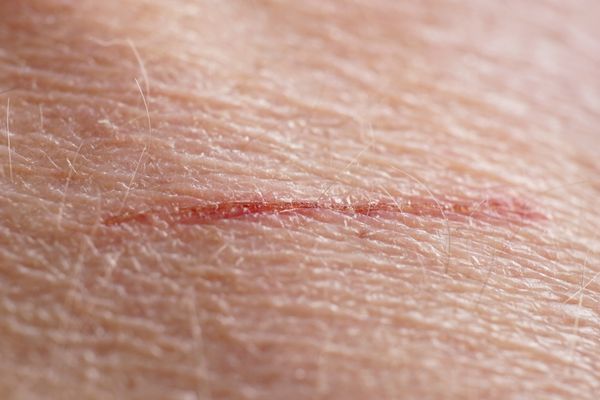
Is gluing a wound better than stitches?
In general I would not use tissue glue or any form of glue to close up the wound, if I can avoid it. However for certain scenarios like for children who are more sensitive to pain, or if the wound is small enough to be closed rapidly tissue glue may be an alternative.
The main issue with tissue glue is that the surrounding area has to be completely dry before tissue glue can be applied to allow good closure of the wound.
For good cosmesis, or reduced scar formation, I would prefer to use sutures, or stitches to close up the wound properly.
Can you buy wound glue over the counter?
It is not possible to buy wound glue over the counter in Singapore. One would need to go to a clinic or hospital A&E to get the wound assessed by a doctor, and thereafter the doctor will offer treatment options.
Can you super glue a cut?
I highly advise against that. Superglue is different from medical grade tissue glue and possibly can do more harm than good.
Can I put nail glue on a cut?
Once again, I highly advise against that for safety reasons.
Can you buy liquid stitches over the counter?
It is not possible to buy liquid stitches over the counter in Singapore. One would need to go to a clinic or hospital A&E to get the wound assessed by a doctor, and thereafter the doctor will offer treatment options.
How do you know if a cut is deep enough?
Usually if the cut has penetrated the first layer of the skin, One would be able to see the layers below the superficial layer and therefore this cut is likely to bleed a lot and cause significant distress to most people. That’s when most people would seek medical attention due to the bleeding.
How long does a deep cut take to heal?
After the cut has been surgically repaired via stitches, most cuts will take between 14 to 21 days to heal properly. After removing sutures there is scar formation which will take another few months to gain maximum skin strength.
How do you treat a slightly deep cut?
For a deep cut sustained at home, I would recommend that you wash the wound thoroughly with clean water. Next, if the bleeding is uncontrolled I would recommend that you get a piece of clean tissue or gauze if available and apply pressure to the wound itself. Thereafter please seek medical attention as soon as possible.
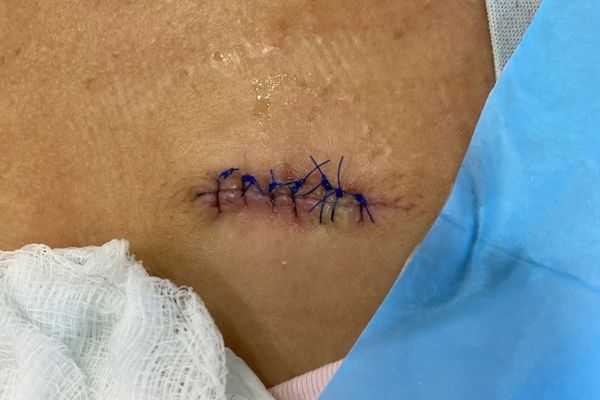
How do you heal a small deep cut?
After surgical repair of the deep cut I usually encourage patients to have a healthy diet and maybe take more vitamin C to boost wound healing. However, the main thing is to avoid wound infection, therefore please keep the wound clean and dry as much as possible. If the dressing becomes soaked or dirty, seek medical attention as soon as possible to get the wound reviewed properly.
Can deep cuts fully heal?
Yes, most deep cuts fully heal well after surgical repair.
How do you heal a deep cut on your finger without stitches?
I highly recommend against this course of action. If the cut is deep and has already exposed structures like tendons, arteries and veins below the skin then the cut should be surgically repaired as soon as possible.This is because there is an increased risk of wound infection if the cut is not repaired properly.
If you are stuck in the wilderness and have no access to medical care. then the best course of action now would be to clean the wound with fresh water, immobilize the wound and wrap the wound in a piece of clean cloth, while trying to get yourself to the nearest medical facility.
How do you treat a deep cut without stitches at home?
At home after sustaining a deep cut, I recommend that you wash the cut with running water as soon as possible and wrap the cut in a piece of clean bandage or cloth. Next, you should be seeking medical attention as soon as possible.
Do deep thin cuts need stitches?
It all depends on the location of the cut itself. Some thin cuts, depending on the size, may not require stitches. However, in other locations like over the joints, or areas where the skin is relatively tight, then you would likely require stitches.
Should I go to the doctor for a deep cut?
I highly recommend you seek medical attention as soon as possible for cuts that are deep. This is to facilitate good wound closure, reduce risk of infection, and optimize healing outcomes.
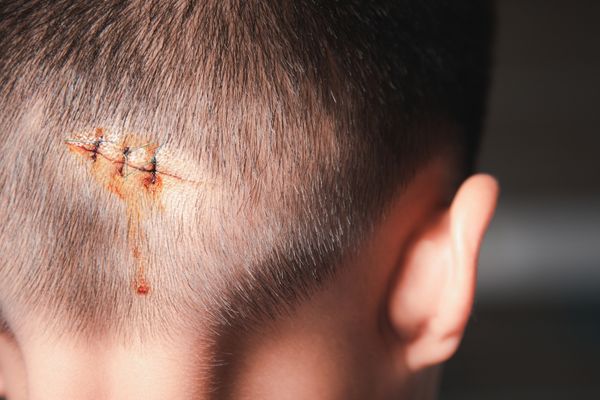
What happens if I wait too long to get stitches?
Assuming that the wound doesn’t get infected after waiting too long, most wounds will heal by secondary intention. This means that the wound heals from the base upwards, and there is an increased risk of scarring.
Is it OK to wait to get stitches?
It is up to you if you want stitches or not. For most deep wounds, doctors generally recommend that the wound is surgically repaired as soon as possible. But sometimes patients are afraid of the surgical procedure.
What happens if you don’t put stitches on a cut?
For some superficial cuts, it’s ok not to have stitches. But for deeper wounds, stitches are usually required for good wound closure. If stitches are not placed in, wound healing will be affected, and may even have increased risk of wound infection.
Why can’t you get stitches after 8 hours?
Assuming that you have an open wound or cut already, and you did not get it attended to initially, after 6 to 8 hours, putting sutures on the wound to close it up may increase your chance of wound infection. This is because bacteria living on the skin or in the environment will start to grow in the open wound. If the wound is closed up with stitches, there may be an increased risk of pus collection (abscess formation) or skin infection.
Can you get stitches after 48 hours?
It is not recommended because of the risk of wound infection, abscess formation or skin infection. The best course of action now would be to clean the wound properly, reduce the risk of infection, and allow the wound to heal by secondary intention, which as mentioned previously, to allow the wound to heal from the base upwards.
Is needing stitches an emergency?
I would probably say that for most cuts or wounds sustained, if the wound is less than 7 cm in length, it is an urgent case, not an emergency case. Usually for these wounds, we would be able to treat in our clinic, surgically close the wound properly using our surgical equipment in our clinic.
However, if the wound is bigger than 7 cm or is very deep, with significant bleeding and exposed organs underneath, then going to hospital would be a good idea.
Can paramedics give you stitches?
Not in Singapore. Usually doctors who are surgically trained, or surgeons, would be in a better position to treat the wound properly.
Treatment of cuts or wounds is not about just closing up the wound. More importantly, its to:
- optimize wound healing, and then
- reduce infection risk, and lastly, if possible,
- reduce scarring risk.
A doctor or surgeon would be in a better position to assess all 3 of these, and give you the best treatment possible.
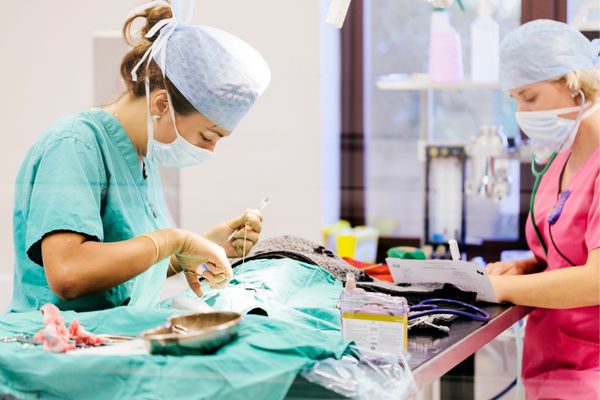
How deep should a cut be to go to hospital?
It depends on the location of the cut and the underlying structures that may have been damaged. For example, if a cut is over the finger, and has no tendon or blood vessel damage, then usually, I would be able to clean the wound, and surgically repair the wound in the clinic.
However, if there is significant tendon damage or blood vessel damage, which can lead to both finger movement impairment and profuse bleeding, then these wounds would be more appropriately treated in hospital.
Does a flap of skin need stitches?
Sometimes, stitches are needed to close the flap and optimize wound healing of the flap injury. If the flap has been left open too long, then sometimes, it is better to allow the wound to heal via secondary intention.
When should you stop covering a wound?
Usually, if there is good wound healing already, or there is a good scab forming over the wound, then by this time I would usually discharge the patient from follow up in the clinic. But before discharging from follow up, good wound care techniques are taught to the patient, such as keeping the wound clean, and trying to be careful with the wound.
This is because, even though the wound has healed enough, the strength of the new tissue is still not like the surrounding skin. Usually by this time, the wound can be exposed if there are no contraindications such as wound infection or pain.
Should you keep a deep cut covered?
Yes, I highly recommend it be covered till you can seek medical attention for a doctor to assess the cut and surgically close it. Furthermore, if there is bleeding, you should be applying pressure on the wound till the bleeding can be stopped by the doctor.
What happens if you leave a bandaid on too long?
If you put a bandaid or plaster for long periods of time on the wound, without removing it, one is unable to check on the status of wound healing. There may be infection happening underneath the plaster if you do not check on it. Furthermore, sometimes, your skin may become sensitive to the plaster and develop a skin sensitivity reaction to the plaster itself.
Therefore it is advisable to remove the plaster or bandaid as soon as the wound heals well enough.
Is it okay to shower with an open wound?
For an open wound, it may be too painful to shower with the wound exposed. Sometimes, covering up the wound during showering, and then getting the wound treated after that may be less painful. Also, this may be better to reduce the risk of bacterial infections as one may inadvertently introduce bacteria to an open wound while showering.
Is it better to let a wound heal covered or uncovered?
It all depends on the wound itself. If the wound has adequately scabbed over, with a natural protective layer on top of the wound, then it is ok to leave the wound uncovered. However, for most wounds without the natural protective layer, then it would be better to cover up the wound with proper dressings and bandages.
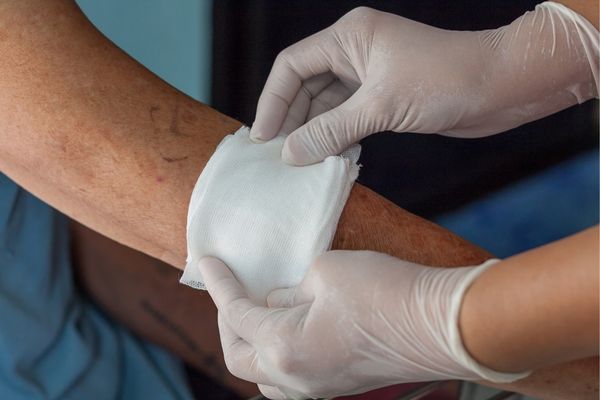
Should you sleep with a bandaid on?
Yes, if the wound is best covered with a bandaid / plaster, then you should still keep it on while sleeping. This is to reduce the risk of wound infection and hence promotes good wound healing.
Conclusion of a Stitched Wounds
In Paddington Medical, we use up-to-date wound care products to promote good wound healing, reduce the risk of infections and reduce scarring risk for patients.
Using our advanced surgical equipment, we have treated many patients, ranging from babies to adults who have sustained cuts and lacerations.
We hope that no one has to suffer such injuries, but if you need our help, do let us know by:
1. Calling 69802986 during our clinic operational hours
3. Email enquiries@paddingtonmedical.com
Alternatively, just walk into our clinic and we will do our best to help you.
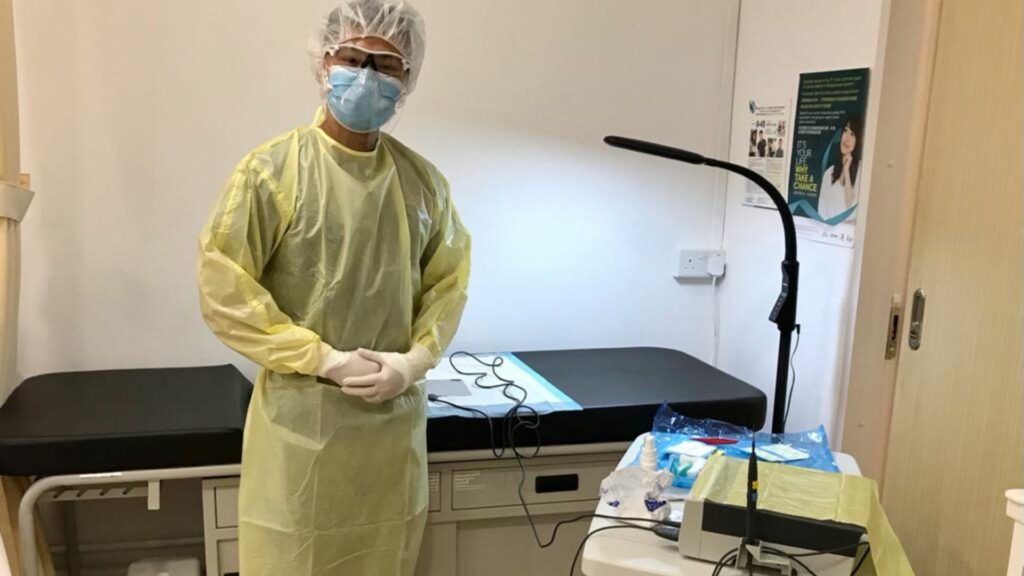
GET IN TOUCH
Schedule a Visit
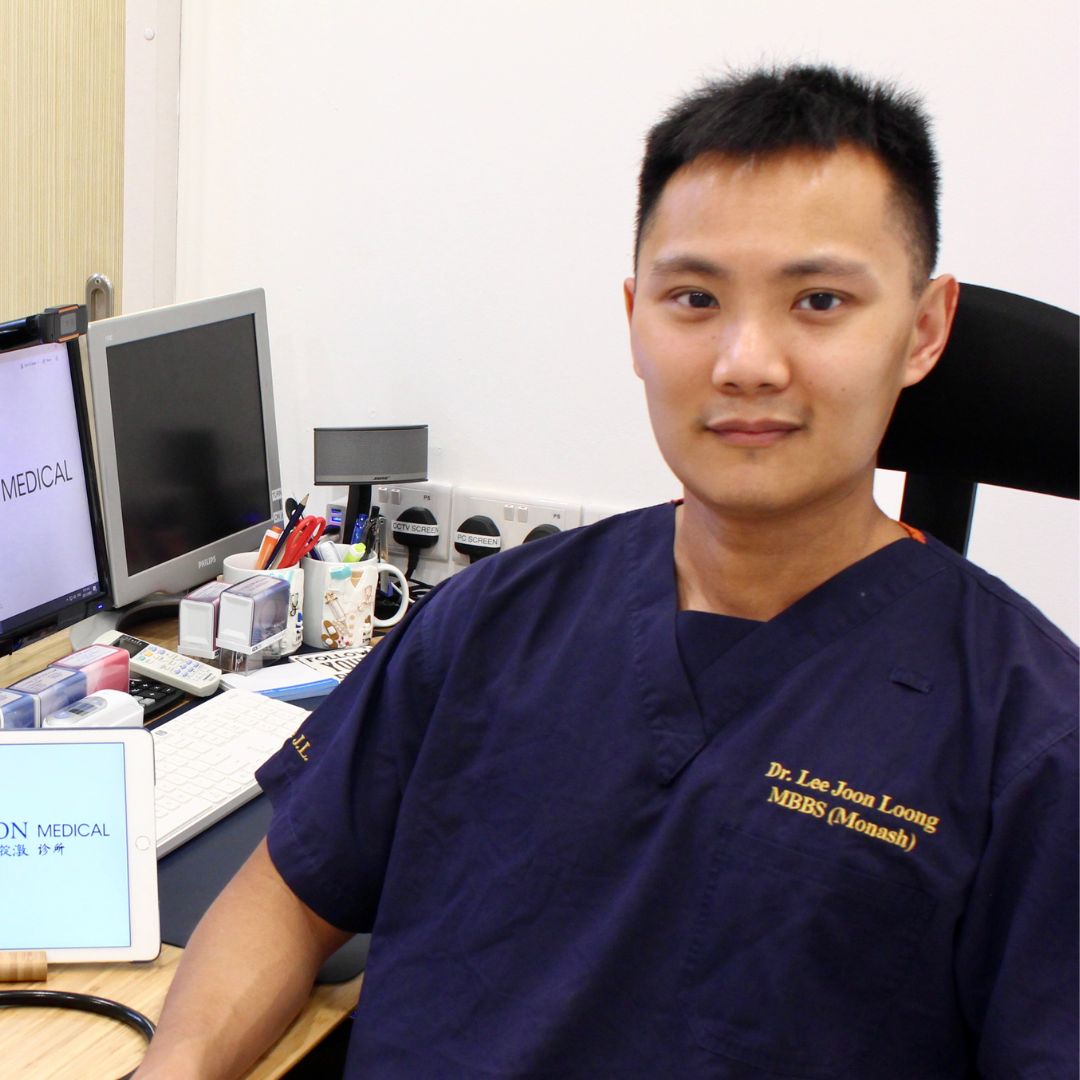
Dr Lee Joon Loong
Medical Director
MBBS (Australia)
Graduate Diploma in Geriatric Medicine
Designated Workplace Doctor (CAW)
EIMS Primary Care Physician
Certificate Course in Andrology (Men’s Health)
Dr Lee is in Clinic on Monday, Wednesday, Friday, Saturday and Sunday.
Dr Lee’s surgical procedure days are on Tuesday and Thursday

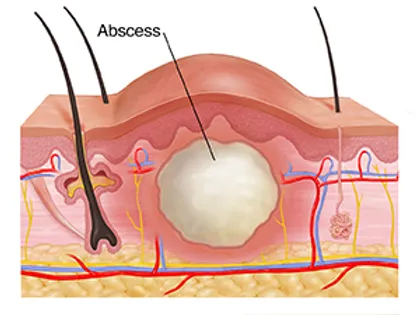
Hi, this is a comment.
To get started with moderating, editing, and deleting comments, please visit the Comments screen in the dashboard.
Commenter avatars come from Gravatar.
A few hours ago, my brother was on a hiking trip, and somewhere along the way, he fell and got injured. He has a deep wound, and I do think he needs medical attention, but he’s stubborn about it, so I’m hoping your post changes his mind. I appreciate your advice on covering a deep cut until you seek medical attention to surgically close it.